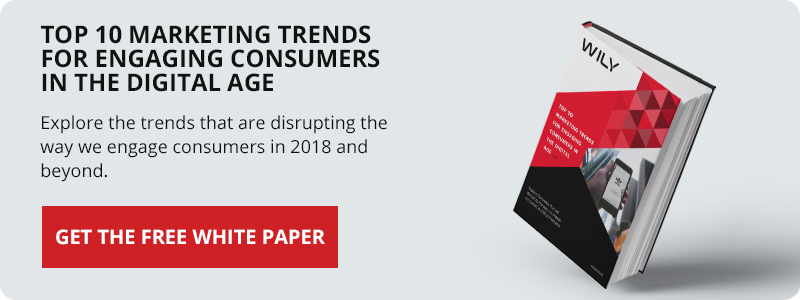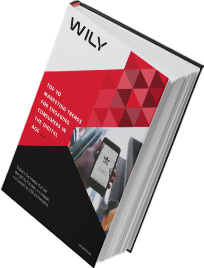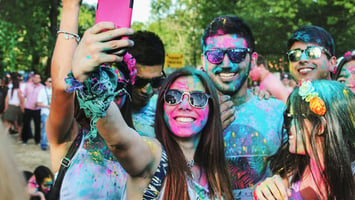When you think of dogs (given you aren’t afraid of them), what comes to mind? Trust, loyalty,...
The Difference Between Brand Experience and Customer Experience (Part 2)
 Last week, we published an article about the main differences between brand experience and customer experience. To sum it up, the brand experience is considered the equivalent to a typical “show dog”, whereas the customer experience is your trustworthy “guide dog”. In our example, we explain how brand experience and customer experience can work together to engage and delight customers. But let’s dig a little deeper to understand how these two ideas come together to drive revenue for an organization.
Last week, we published an article about the main differences between brand experience and customer experience. To sum it up, the brand experience is considered the equivalent to a typical “show dog”, whereas the customer experience is your trustworthy “guide dog”. In our example, we explain how brand experience and customer experience can work together to engage and delight customers. But let’s dig a little deeper to understand how these two ideas come together to drive revenue for an organization.
We’ll do this by first separating them into two distinct categories, and then explaining how they are one all-encompassing strategy.
But first, let’s set the stage…
Brand experience and customer experience both inherently focus on one thing: the customer. The brand experience caters to the consumer, even before they become a customer, while, the customer experience helps to guide a customer throughout a transaction or an interaction from within the brand. Both concepts are rooted in the wants and desires of the customer, and although they sound alike, are different in their approach.
Many of us understand the definition of each of these terms, but how do they relate from within the brand/customer experience?
UI vs. UX
UI, also known as user interface, relates to the design of an experience. Brand experiences rely heavily on design to communicate a certain message and make consumers feel a certain way about the brand. UI design can often make or break your brand experience.
UX, or user experience, refers to the journey a customer must go through in order to reach their ultimate destination with your brand. The customer experience requires a seamless UX to do its job properly. One of the most talked about UX topic is omni-channel. With the number of channels and devices we have today, it’s integral for customers to easily navigate across them. Otherwise, the result is high customer churn and low customer satisfaction.
Marketing vs. Service
Here, we are referring to the different organizational departments that are required for each to work: marketing and customer service.
Brand experiences rely on a marketing and advertising strategy to not only conceive of an experience, but also to promote it. It’s virtually impossible for customers to interact with a brand experience without any awareness. This is how organizations bring in new leads, create opportunities, and ultimately motivate customers to purchase.
However, customer experience relies heavily on service for success. Customer service must be present throughout every touchpoint across the customer journey. Customers must be able to find service and guidance quickly and effortlessly for brands to truly win them over.
Activation vs. Support
Activation and support refers to the central purpose of the brand/customer experience.
Brand experiences activate customers who may or may not know the brand. This can be accomplished via a campaign, or a program, that your marketing department rolls out. To get a better idea of the strategies used to activate consumers and enhance the brand experience, go here.
As mentioned earlier, the customer experience is intended to support a customer while they are on a journey with your business. The key takeaway is that the customer experience is ready for action at any time. Without it, things can easily go array. Check out this brand activation story to understand the importance of support and technology on the experience.
Long term vs. Immediate
Brand experience is a long term strategy that grows and develops with the business overtime. Consumers are continuously engaging with the brand experience, and eventually a relationship forms along the way. The brand experience encourages consumers to see the business in a certain way and encourages behaviours in return i.e. loyalty.
The customer experience is much more immediate. If your customer can’t navigate your ecommerce website because the customer journey is complicated and bulky, that creates an immediate reaction. The result is a lost customer, or at the very least, a lost sale. It doesn’t matter how great your brand experience is if the customer experience is lacking.
Engagement vs. Satisfaction
We can’t talk about experiences without talking about feelings. Both the brand and customer experience attempt to make a customer feel a certain way. However, they are measured differently.
Brand experiences can be measured across a number of data points such as walk-bys, conversions, dwell time, return visits, and, be tracked back to retail stores or other places of purchase. In order to prove the ROI of a brand experience, leading managers use reporting and surveys to explain how engaged consumers are with the experience. Visit our Engagement Center to see case studies from the world’s most trusted brands, and how they track the brand experience.
Customer experience, however, is typically measured via CSat (Customer Satisfaction Scores), NPS (Net Promoter Score), and CES (Customer Effort Score). These metrics require a customer to communicate with a brand, such as a feedback survey, or a star rating.
The difference between these, is that engagement can be tracked without the customer doing anything, whereas, satisfaction is something a customer willingly shares with the business.
In conclusion, both brand and customer experience are equally important to revenue generation and brand loyalty. They are both ultimately rooted in a customer’s brand affinity, and whether or not they will do business with you again. Each work in a cyclical way to help the other accomplish its goals.
In part 3 of this 4 part series, we’ll explore some of the specific tactics used in both to drive success and revenue, and move consumers through each stage of the customer journey from awareness, engagement, to purchase.
White Paper: 2018 Consumer Engagement Trends Report
In this age of digital transformation, businesses need to take creative risks when it comes to their engagement strategy. Explore the top 10 marketing trends that are disrupting the way we engage consumers in 2018 and beyond.
WHAT’S INSIDE:
- Personalizing the Experience with Artificial Intelligence
- Getting Immersive with Virtual Reality & Augmented Reality
- Winning Over Your Customer with Contests and Sweepstakes
- Interactive Case Studies from Dr. Oetker and adidas
- Plus So Much More!
Download the FREE 17 page report today!





